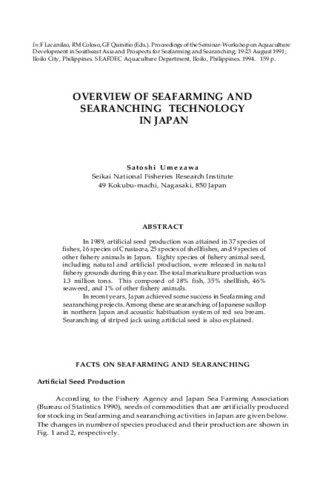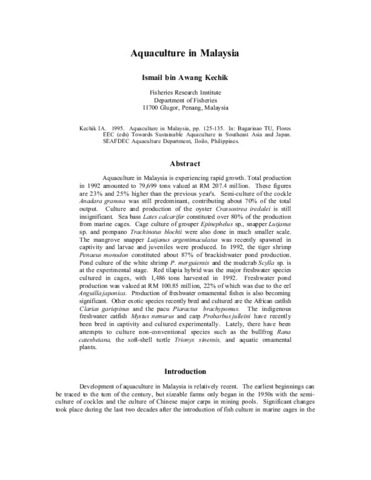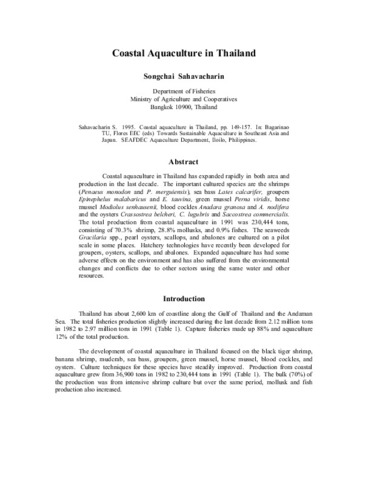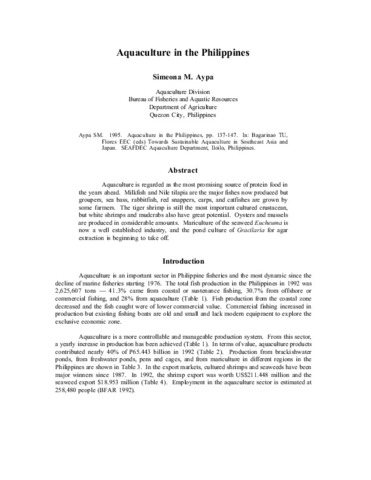Overview of seafarming and searanching technology in Japan
Share
Abstract
In 1989, artificial seed production was attained in 37 species of fishes, 16 species of Crustacea, 25 species of shellfishes, and 9 species of other fishery animals in Japan. Eighty species of fishery animal seed, including natural and artificial production, were released in natural fishery grounds during this year. The total mariculture production was 1.3 million tons. This composed of 18% fish, 35% shellfish, 46% seaweed, and 1% of other fishery animals.In recent years, Japan achieved some success in Seafarming and searanching projects. Among these are searanching of Japanese scallop in northern Japan and acoustic habituation system of red sea bream. Searanching of striped jack using artificial seed is also explained.
Suggested Citation
Umezawa, S. (1994). Overview of seafarming and searanching technology in Japan. In F. Lacanilao, R. M. Coloso, & G. F. Quinitio (Eds.), Proceedings of the Seminar-Workshop on Aquaculture Development in Southeast Asia and Prospects for Seafarming and Searanching; 19-23 August 1991; Iloilo City, Philippines. (pp. 93-104). Tigbauan, Iloilo, Philippines: Aquaculture Department, Southeast Asian Fisheries Development Center.
Paksa
Mga koleksyon
- ADSEA '91 [21]
Related items
Showing items related by title, author, creator and subject.
-
Aquaculture in Malaysia
Kechik, Ismail bin Awang. (Aquaculture Department, Southeast Asian Fisheries Development Center, 1995)Aquaculture in Malaysia is experiencing rapid growth. Total production in 1992 amounted to 79,699 tons valued at RM 207.4 million. These figures are 23% and 25% higher than the previous year's. Semi-culture of the cockle ... -
Coastal aquaculture in Thailand
Sahavacharin, Songchai (Aquaculture Department, Southeast Asian Fisheries Development Center, 1995)Coastal aquaculture in Thailand has expanded rapidly in both area and production in the last decade. The important cultured species are the shrimps (Penaeus monodon and P. merguiensis), sea bass Lates calcarifer, groupers ... -
Aquaculture in the Philippines
Aypa, Simeona M. (Aquaculture Department, Southeast Asian Fisheries Development Center, 1995)Aquaculture is regarded as the most promising source of protein food in the years ahead. Milkfish and Nile tilapia are the major fishes now produced but groupers, sea bass, rabbitfish, red snappers, carps, and catfishes ...





